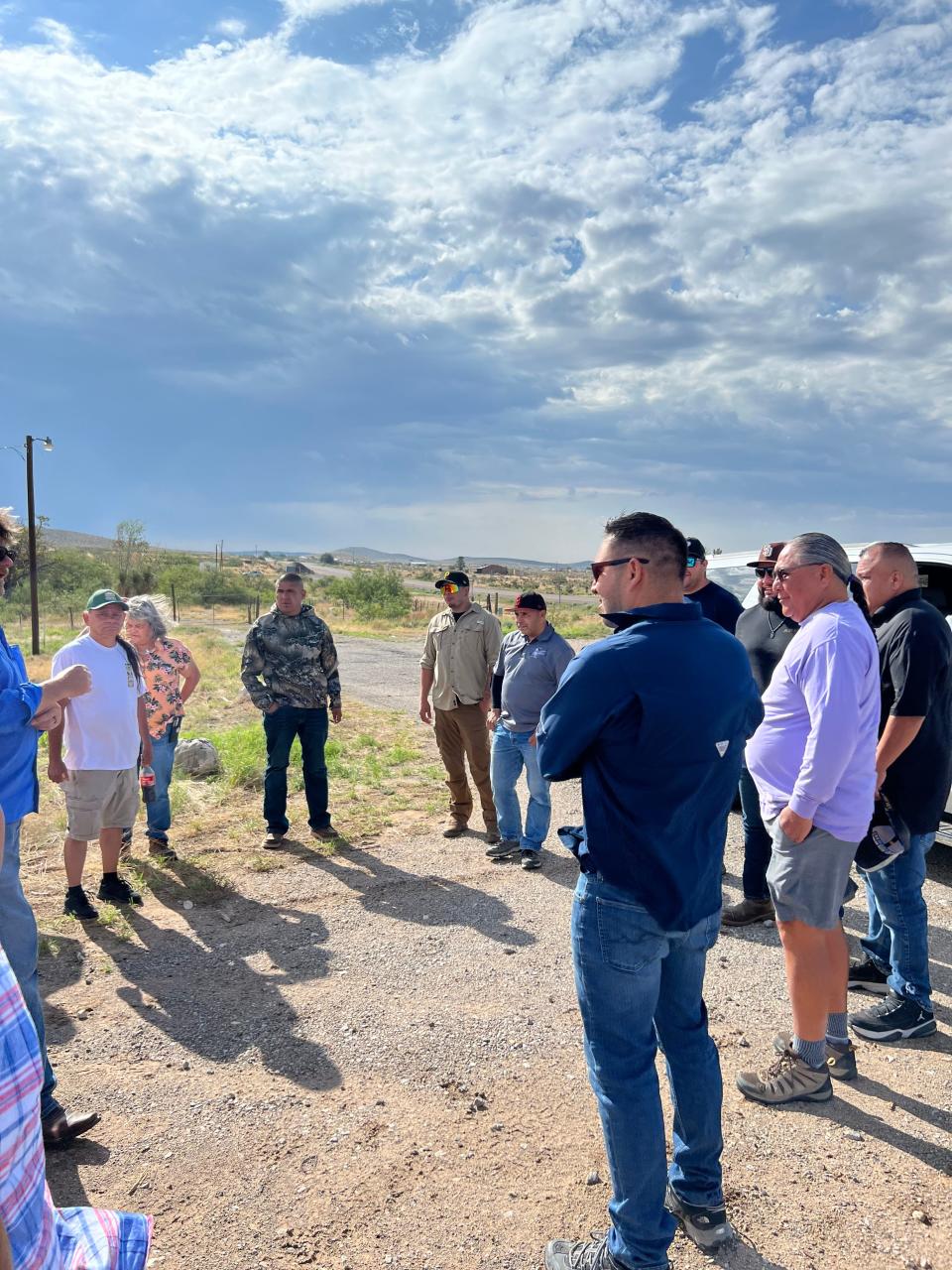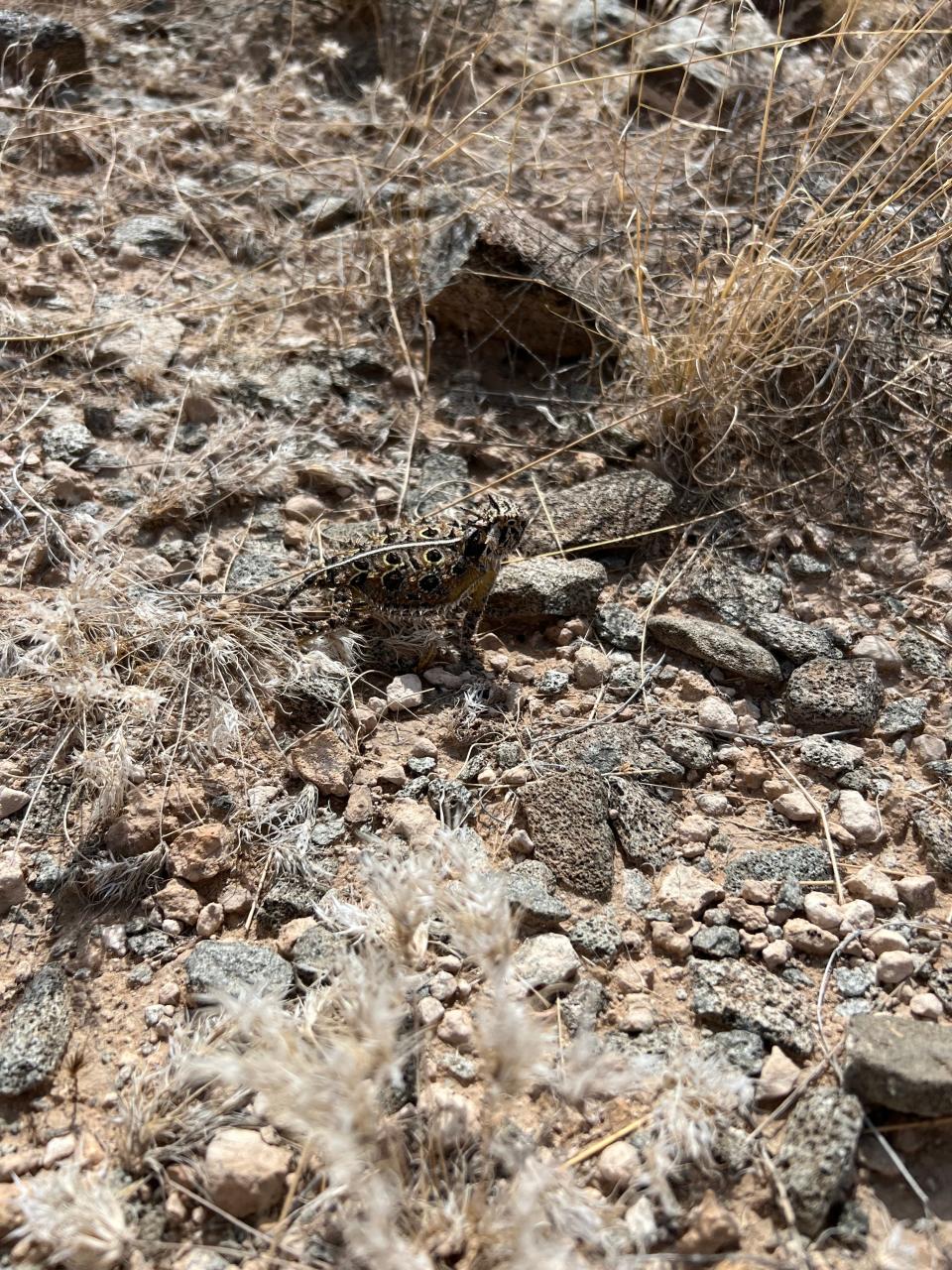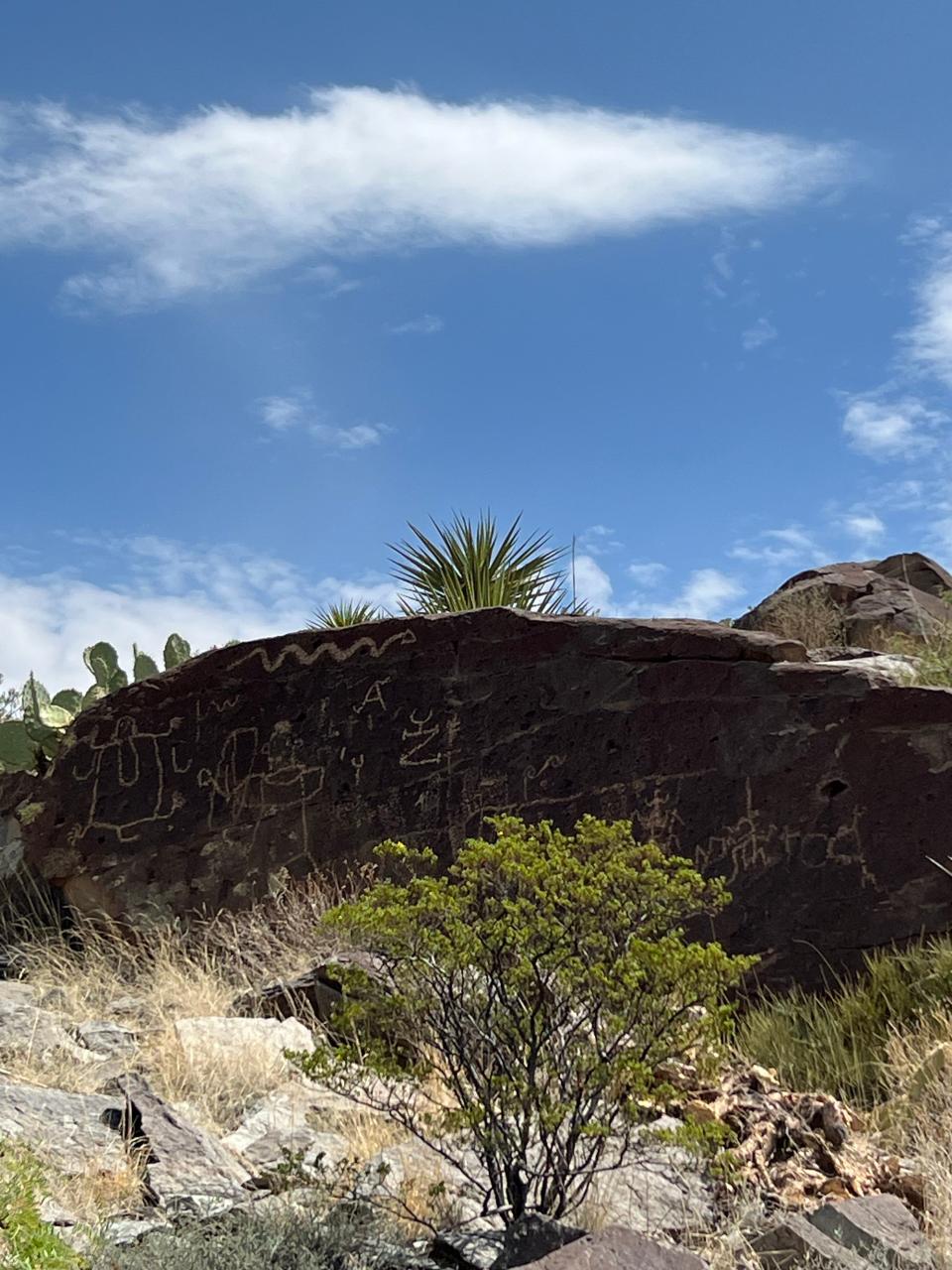NM Rep. Gabe Vasquez visits Otero Mesa and local tribes to talk conservation
- Oops!Something went wrong.Please try again later.
On Monday, Aug. 14, Rep. Gabe Vasquez of New Mexico's Second Congressional District, met with leaders from the Mescalero Apache Tribe and members of Ysleta Del Sur Pueblo (Tiguas) where protection for Otero Mesa, one of the largest remaining areas of the Chihuahuan Desert, was the topic of discussion.
Vasquez said the Otero Mesa area is sacred land to not only the Mescalero Apache Tribe but for the Tiguas as well, and should be considered for conservation.
Vasquez and his team hoped to include Indigenous communities in conservations about how to designate the land for use.
The visit comes two weeks after the Bureau of Land Management (BLM) published a draft resource management plan for natural resources in southeast New Mexico. The plan focused on key points such as mineral development and oil extraction.
More: Oil and gas industry opposes federal conservation proposal, New Mexico voices support

Otero Mesa is the largest intact Chihuahuan Desert grassland left on public land. A large portion of the desert is found on private land.
Vasquez along with a dozen people from the Mescalero Apache Tribe and the Tiguas hiked Alamo Mountain in Otero Mesa. The area is located at the border of New Mexico and Texas and has been considered for resource management for over a decade, Vasquez said.
“In a district that faces dire climate challenges, we must all come together to conserve our most critical resources and protect our cultural heritage," said Vasquez.
"There are few places left in the world as special as our own Otero Mesa. As New Mexicans, we are deeply connected to our land, water and wildlife, and this week we had a chance to forge new partnerships in southeast New Mexico to discuss the future of conservation and prioritize areas that are important to protect for future generations. I’m committed to working with diverse partners to find sustainable ways to address these challenges, while also growing our economy.”
More: History is repeating itself on the Otero Mesa
Traveling with Vasquez was Fernando Clemente from New Mexico Wildlife Services who said resources such as water already found in Otero Mesa benefit its wildlife and vegetation.
"It's a matter of managing the land. You have things like weeds that can take over the land and be acidic for some of the animals here, like the sheep on these lands will not eat it," Clemente said. "It's a matter of clearing invasive species such as the weeds."
Clemente said the Salt Basin Aquifer beneath Otero Mesa holds one of the largest reserves of potable water in southern New Mexico. Clemente said this would be a key contribution to a much-needed natural resource.
Clemente said much of the wildlife benefits from the water beneath the ground but also benefits from the greenery it helps nurture.

Animals like bobcats, horned lizards and javelinas make Otero Mesa their home. Other animals that call Otero Mesa home are the big horn sheep and pronghorn herds which are ideal for hunters in Texas and New Mexico.
Bjorn Fredrickson with New Mexico Wild said aside from the wildlife in the area there are also archaeological documentation of Apache homesites and camps.
"It's an exceptionally rich place in terms of both prehistoric and historic culture resources, so many wildlife values," Fredrickson said. "Some of the scenic views to enjoy and an expansive grassland, it is one of the places in New Mexico with some of the largest concentrations of dark skies, which is a resource that many of us have lost with populated areas."
More: More New Mexico land must be saved from oil and gas to prevent climate crisis, study says
He said Otero Mesa offers not only natural resources but educational opportunities.
Fredrickson said this pocket of land is crucial for both Texas and New Mexico, states in which the extraction of fossil fuels has generated large revenues amid state and federal discussions of conservation.

"There is obviously a need for development and resource extraction in the world but there are places that are appropriate for that and places that are not. There is this notion between those two sets of values. We depend on modern economy for resource extraction but there are incredible values and needs to protect these areas," Fredrickson said.
Vasquez said areas like Otero Mesa must be prioritized for conservation for future generations.
"Otero Mesa is a sacred site for surrounding Indigenous communities and is of vital importance to the sportsmen's and ranching community. It's a place with unmatched grasslands habitat deserving permanent conservation management for future generations," Vasquez said. "The protection of these unique Chihuahuan Desert lands should be a collective decision by all stakeholders, and that's what our office is seeking to accomplish - is finding the right balance of conservation, multiple use, and protecting sacred sites."
Juan Corral can be reached at JCorral@gannett.com or on twitter at @Juan36Corr.
This article originally appeared on Alamogordo Daily News: NM Rep. Gave Vasquez visits Otero Mesa

